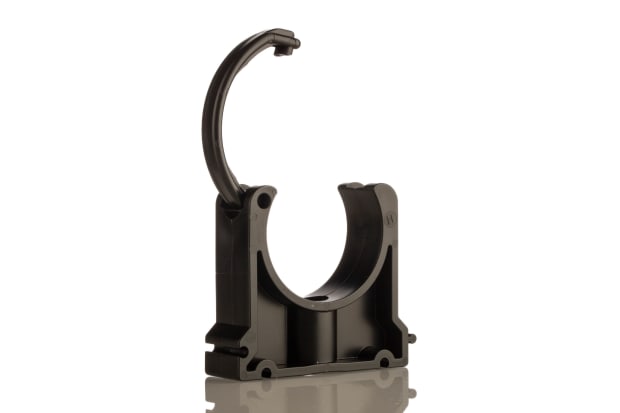- Published 5 Jan 2023
- Last Modified 4 Sept 2023
- 11 min
Everything You Need To Know About Pipe Clamps

What are pipe clamps?
Pipe clamps - often referred to as pipe clips or sometimes saddle clamps are relatively simple fittings widely used in many DIY/installation settings. They’re one of the various types of channel support system, most commonly found in plumbing, heating, drainage and electrical work.
Pipe clamps are circular or semicircular brackets, sometimes incorporating a spring clip or ‘bossed’ system, that - when chosen correctly - fit snugly around the conduit, cables or tubing you’re installing. The clip then screws or bolts (either directly or via a hanger bracket) to whichever wall or surface you’re running the pipe along, be it wood, tiling, plaster or masonry. The tubing is thus held securely in place and supported over the full length of its run, ensuring a reliable and fuss-free mounting solution.
In any number of scenarios where you might want to affix, support and restrain pipes, tubing or cables along walls and under ledges, you shouldn’t have a problem finding the right size and style of pipe clamps on sale to handle the job perfectly - as long as you know what you’re looking for, that is!
How do pipe clamps work?
We know the basics of what they are, but how do pipe clamps work exactly? Well, that depends very much on the job you want them to do.
Pipe clips and clamps come in a wide range of sizes and diameters. They’re made from various materials ranging from plastic to copper, stainless steel, brass and chrome, and are available in numerous different bracketing and mounting options (single-screw, two-screw or three-screw, bolt-down, clip-in, and so on). They work very simply by encircling lengths of tubing or cable while affixed to walls or structures, holding conduit firmly in place wherever you need it to go.
Pipe clips usually come in either gripping (anchor) or non-gripping (saddle/guide) configurations, depending on how tightly you want the conduit to be fixed in place. Note that in some applications, allowing a little room for movement - whether thermal, mechanical or otherwise - is beneficial.
The best choice of pipe clamp for the job will usually depend on a handful of key questions - in no particular order, the most important of these tend to be:
- what are you mounting?
- where are you mounting it?
- what diameter and spacing do you need to achieve proper support across the full run?
What are pipe clamps used for?
Pipe clamps are found in all manner of household, industrial and outdoor settings. They’re used as an efficient and tidy way to restrain, secure and guide tubing or conduit for a range of plumbing, heating and electrical purposes. Pipe clips in the UK are sold in a wide variety of materials, finishes and styles to suit jobs from concealing thin cables to supporting heavy-gauge wastewater disposal systems.
Pipe clamps for plumbing
Plumbing pipe clamps are among the most common types, used all over households and workspaces to secure/support varying diameters of pipeline neatly and safely in place.
The main trick to getting plumbers clamps right is knowing which diameter, grip type and material to choose for which type of water or drainage pipe. We’ll look more closely at the numerous options available for pipe clips in plumbing applications over the coming sections of this guide.
Pipe clamps for drains
Drain pipe clamps, sometimes called gutter clips or brackets, can include fixtures for securing wastewater conduit as part of an interior plumbing and drainage system, as well as the familiar UPVC rainwater collection channels affixed to the fascia boards of most exterior roofing. Both types require brackets and clips to support ductwork, albeit of very different types and functions.
Just like in central plumbing applications, selecting the right drain pipe clips for the job is a matter of knowing exactly which diameter and shape of clip you need to hold your wastewater pipework firmly in place.
Pipe clamps for wood
You’ll frequently see pipe clamps mentioned in a carpentry or joinery context - which can be somewhat confusing, as they serve an entirely different purpose here! A pipe clamp for wood generally refers to a type of wide, freestanding and fully adjustable vice clamp, most often used for holding multiple boards together to achieve a stronger join during edge glueing.
However, woodworking pipe clamps work on much the same principle as any other pipe clip: you need to select the right diameter, style and material of clips to fit around the pipe, otherwise, it won’t be able to provide a secure enough grip to lock those end-joints in place.
Which pipe clamp materials are best for which jobs?
There are almost as many different materials used for pipe clamps as there are varying diameters and mounting systems for them. Below you’ll find a few of the more common materials used, and some examples of which is best suited to what sorts of application.
What are stainless steel pipe clamps best for?
Stainless steel pipe clamps are ideal when used in any setting where they could be exposed to moisture corrosion, oxidation or similarly harsh environmental conditions.
The enhanced rigidity and resistance of stainless steel pipe clips to these (and most other) causes of discolouration or structural degradation make them a reliable and long-lasting heavy-duty option.
There are some elements that can cause long-term issues for stainless steel clamps - notably prolonged exposure to salts and other trace minerals - but on the whole, they’re a great choice for a wide range of demanding indoor and outdoor uses.
What are plastic pipe clamps best for?
Plastic pipe clips are a great option in many scenarios where a degree of flexibility is required - such as for lighter-gauge cabling runs that might need to be removed and replaced at various times - or where the rigidity and sturdiness of metal fixtures is overkill for the type of conduit being supported.
In various outdoor applications, plastic clips are widely used for their moisture resistance and a range of other hard-wearing qualities. Most modern gutter clips, for example, tend to be available in PP/uPVC plastic or similar, which is broadly resistant (after treatment) to a range of potential hazards such as electrical conductivity, thermal shock and UV discolouration.
Plastic pipe clamps are also handy for blending more seamlessly with typical household decor or painted walls, making them less obtrusive when used in full view. Small plastic clips are often semicircular or U-shaped, and designed to bend open so as to gently cradle (rather than fully encircle and lock in place) the tubing or cable runs they’re supporting.
What are copper pipe clamps best for?
Copper pipe clamps, much like copper tubing itself, are excellent for use in indoor plumbing systems. Although known as a comparatively malleable metal, most copper used in plumbing systems is relatively rigid, doesn’t react with water, and remains neutral and non-toxic over many years of extended use in plumbing systems.
Copper pipe clips won’t corrode on exposure to any residual moisture, so they stay looking good for decades on end, and they’re generally prized for a pleasing aesthetic quality even when used in exposed piping and ductwork. Excellent thermal properties - particularly in terms of dealing with continual expansion and contraction - further contribute to their longevity in hot and cold water systems.
What are brass pipe clamps best for?
Brass pipe clamps are often used when an element of decorative appeal is required, but they’re also just as hard-wearing in many plumbing applications as copper is (after all, it’s an alloy of copper and zinc).
Like copper, brass pipe fittings and pipe clips don’t rust or discolour even after long-term exposure to water, and they’re resistant to attacks from pH shift, salts and other trace minerals. In addition, brass has similarly good thermal ductility and conductivity for extended lifetime performance and economy and is also fire resistant.
What are chrome pipe clamps best for?
Chrome and chrome-plated pipe clips are used in many of the same sorts of environment that stainless steel would be - again, their general resistance to corrosion and other frequent culprits in all-round weathering and degradation make chrome pipe clamps a solid choice for most indoor and outdoor uses.
Chrome remains one of the most popular aesthetic choices for any pipe clamps being used in high visibility areas in and around the home.
As with all plated metals, the quality and thickness of the plating layers are what determines the longevity and resistance of the fixture. Thinner coatings will be at higher risk of developing defects and bubbling when exposed to harsh environments for extended periods, whereas high-quality chrome plating can last even longer than stainless steel under similar conditions.
Which pipe clip sizes are best for which jobs?
In any well-planned use of pipe clamps for securing conduit or cables, one of the first major decisions you’ll come up against is what size or diameter to use for which type of application. This is most important in plumbing applications, where various specific grades of pipework are required for handling different supply lines or drainage outlets
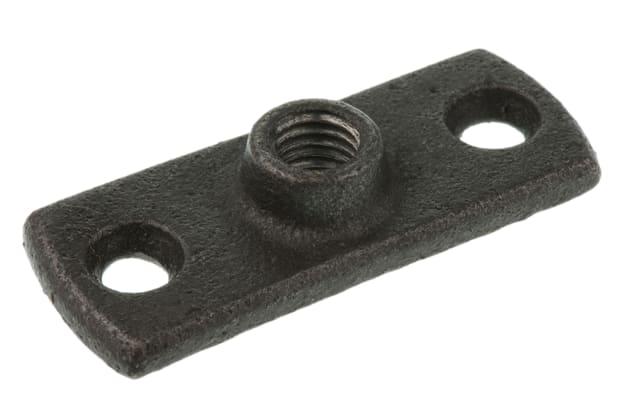
What are 10mm pipe clips best for?
10mm pipe clamps are typically seen securing the narrower ductwork found in many ‘microbore’ central heating systems, usually in copper, brass, or possibly iron in much older houses. Microbore systems can offer some real efficiency advantages due to reduced heat loss through smaller pipes, but the trade-off is a greater tendency to clogging, particularly in hard water areas.
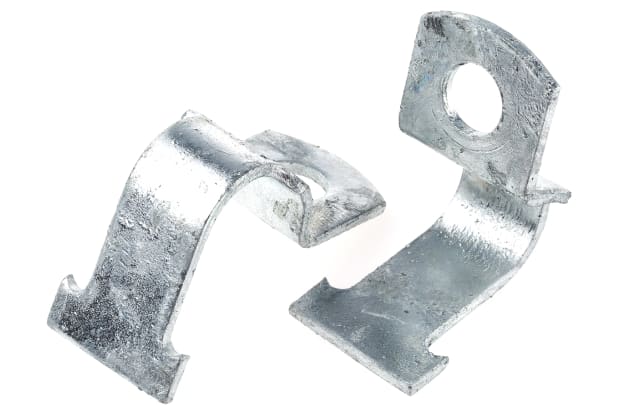
What are 15mm pipe clips best for?
15mm pipe clips are generally used in copper, brass or treated plastic tubing runs coming off the main water supply to reach individual taps and appliances. This width of conduit is often seen in UK household plumbing, where it remains a common choice for hot and cold water, heating and gas supply.
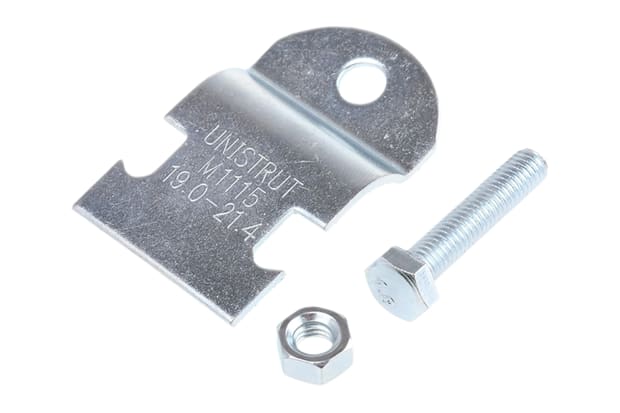
What are 20mm pipe clips best for?
20mm pipe clips suit a range of applications for this grade of tubing, which is often used as either a water main above ground (provided it’s a suitably hard-wearing and UV-resistant material, such as MDPE), or as an irrigation pipe under the surface. 20mm conduit is also used in various electrical cabling, trunking and routing applications, commonly passing through tubes made from PVC or similar high-grade plastics.
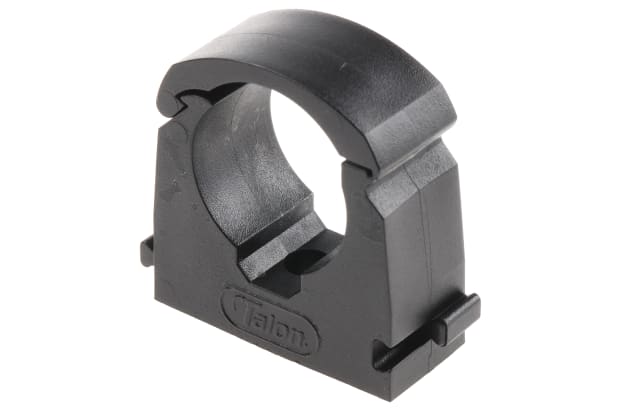
What are 22mm pipe clips best for?
In most modern plumbing applications, 22mm pipe clips are generally found supporting the slightly higher-gauge conduit used in longer runs, where thinner 15mm tubing might lead to too much pressure drop before the flow reaches the desired water taps or appliances. Common materials include copper, brass and treated plastics.
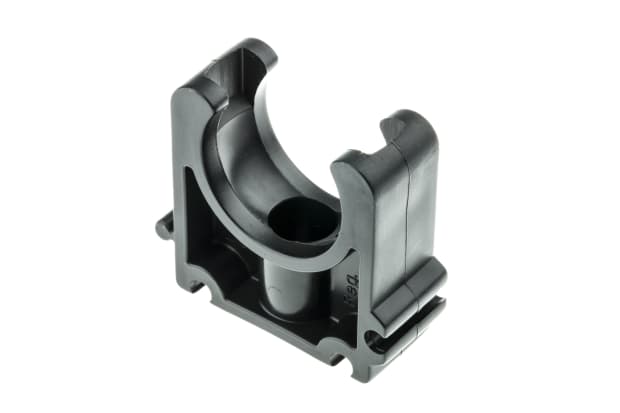
What are 25mm pipe clips best for?
25mm pipe clamps are most often found connecting outdoor, landscape gardening and rainwater harvesting systems. Most 25mm HDPE rainwater pipe is colour-coded (black and green) in accordance with UK regulations, to ensure it isn’t confused with any fixed conduit supplying purified tap water.
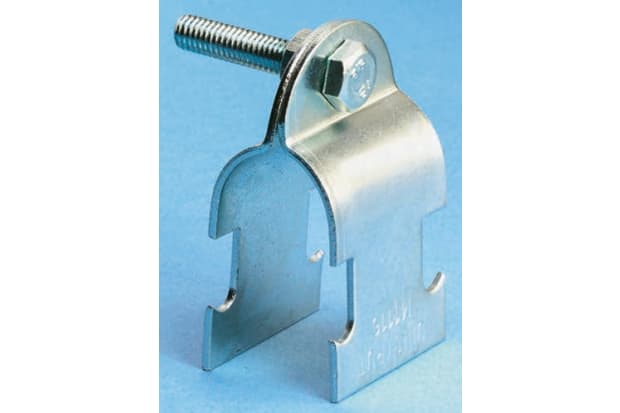
What are 28mm pipe clips best for?
28mm pipe is usually thought of as the widest ‘standard’ grade of water supply conduit for most household plumbing applications. As such, it’s regularly sold in the UK in copper, brass or plastic varieties, with a corresponding range of suitably sized pipe clips, 28mm compression fittings and more available to match this larger outside tubing diameter.
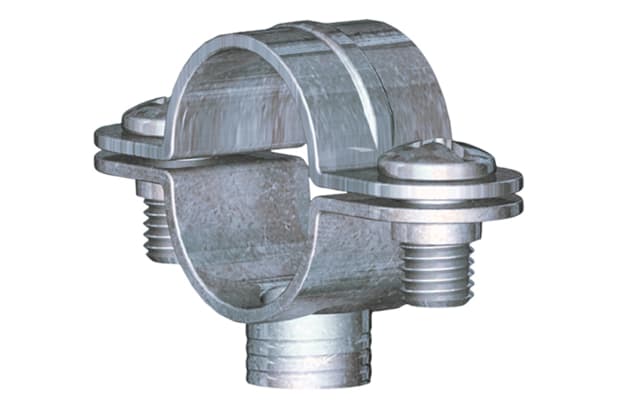
What are 32mm pipe clips best for?
32mm pipe clips are best used for securing moderate-flow waste pipes running from basins, bidets and other mid-sized appliances. In most cases, up to three such fixtures can be fed into a single 32mm waste pipe, provided the run isn’t excessively long. Materials are usually uPVC plastic or similar.

What are 40mm pipe clips best for?
40mm is a common diameter of pipe clip for supporting treated plastic (uPVC or similar) or stainless steel wastewater systems. This grade of tubing and 40mm pipe clips are regularly found carrying higher volume waste from baths and showers.
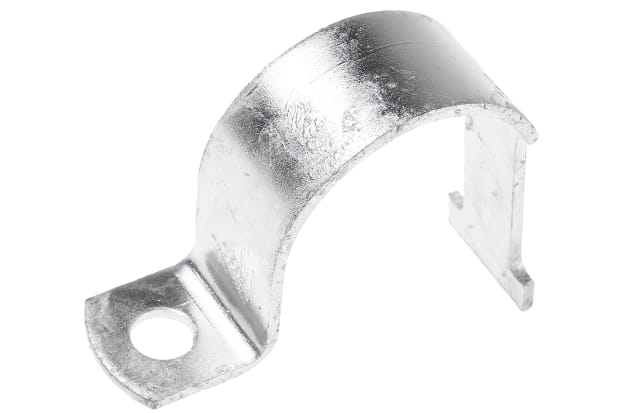
What are 50mm pipe clips best for?
50mm pipe clips are generally a good choice for securing waste pipe running from various types of high-throughput household or commercial appliances, particularly where an excessively long run to outside drainage makes the more standard 40mm diameter conduit a less suitable option than usual. These setups will most often be made from uPVC or similar plastics.
Summary
With such a vast range of different fixtures, fittings and intended uses on offer in the UK, settling on the right combination of conduit, pipe clamps, materials and fixture types can be a daunting process, especially for newcomers. Feel free to contact our customer service teams any time for additional information and guidance - whatever the job size, RS can help you tackle your next plumbing upgrade or cable-routing project quickly, safely, and with a minimum of fuss.
Product spotlights
For the most popular brands of pipe clips, click to view the full product range:
